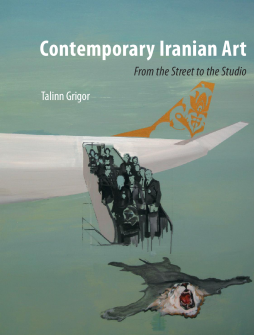
Additional Information
Book Details
Abstract
In the first comprehensive look at Iranian art and visual culture since the 1979 revolution, Talinn Grigor investigates the official art sponsored by the Islamic Republic, the culture of avant-garde art created in the studio and its display in galleries and museums, and the art of the Iranian diaspora within Western art scenes. Divided into three parts—street, studio, and exile—the book argues that these different areas of artistic production cannot be understood independently, revealing how this art offers a mirror of the sociopolitical turmoil that has marked Iran’s recent history.
Exploring the world of galleries, museums, curators, and art critics, Grigor moves between subversive and daring art produced in private to propaganda art, martyrdom paraphernalia, and museum interiors. She examines the cross-pollination of kitsch and avant-garde, the art market, state censorship, the public-private domain, the political implications of art, and artistic identity in exile. Providing an astute analysis of the workings of artistic production in relation to the institutions of power in the Islamic Republic, this beautifully illustrated book is essential reading for anyone interested in Iranian history and contemporary art.
“Dense with history and politics and provides an important window into a culture that many find inscrutable. However, instead of negatively affecting the narrative, such complications make the portrayal of Iran’s contemporary art scene more fascinating. . . . A valuable addition.”
— ARLIS/NA
“Filled with beautiful visual imagery and penned in readable prose, Grigor’s history illuminates Iran’s visual culture with a suitably rich complexity.”
— Art Asia Pacific
“This book is a brave venture, a pioneering act of service to a broad readership. Iran counts as among the most dynamic and charismatic phenomena in the field of contemporary art, and to learn about it one has had to rely largely on vacuous marketing ploys of this lucrative body of artistic material. Grigor’s painstaking research for this book, her rich collection of visual and discursive data, her insights, and her very readable prose contribute not only to our understanding of contemporary Iran but also to the broader study of contemporary global arts into which Iran should and does fit firmly. In many ways, this book will be a benchmark for all future studies on contemporary Iranian arts.”
— Sussan Babaie, author of Isfahan and its Palaces
“Grigor’s Contemporary Iranian Art is a rigorous and authoritative statement about art that will be essential to anyone interested in Iranian culture and history. It also provides much needed education for an art audience hungry for a scholarly, detailed, and historically minded treatment of the Iranian contemporary art world.”
— Peter R. Kalb, author of Art Since 1980: Charting the Contemporary
“Richly illustrated and compellingly argued, Contemporary Iranian Art is a welcome addition to an emerging scholarly literature on contemporary art in non-Western and postcolonial societies. It will be of interest to students and scholars of modern and contemporary art and architecture, visual culture, Middle Eastern and Asian studies, and globalization, as well as to general readers and an art world audience of curators, critics, and artists. . . . Highly recommended”
— Choice
“Grigor reports and documents the history behind Contemporary Iranian Art coherently and expertly.”
— Journal of the Society for Contemporary Thought and the Islamicate World
Talinn Grigor is associate professor in the Department of Fine Arts at Brandeis University in Boston and the author of Building Iran: Modernism, Architecture and National Heritage under the Pahlavi Monarchs and Identity Politics in Irano-Indian Modern Architecture.
